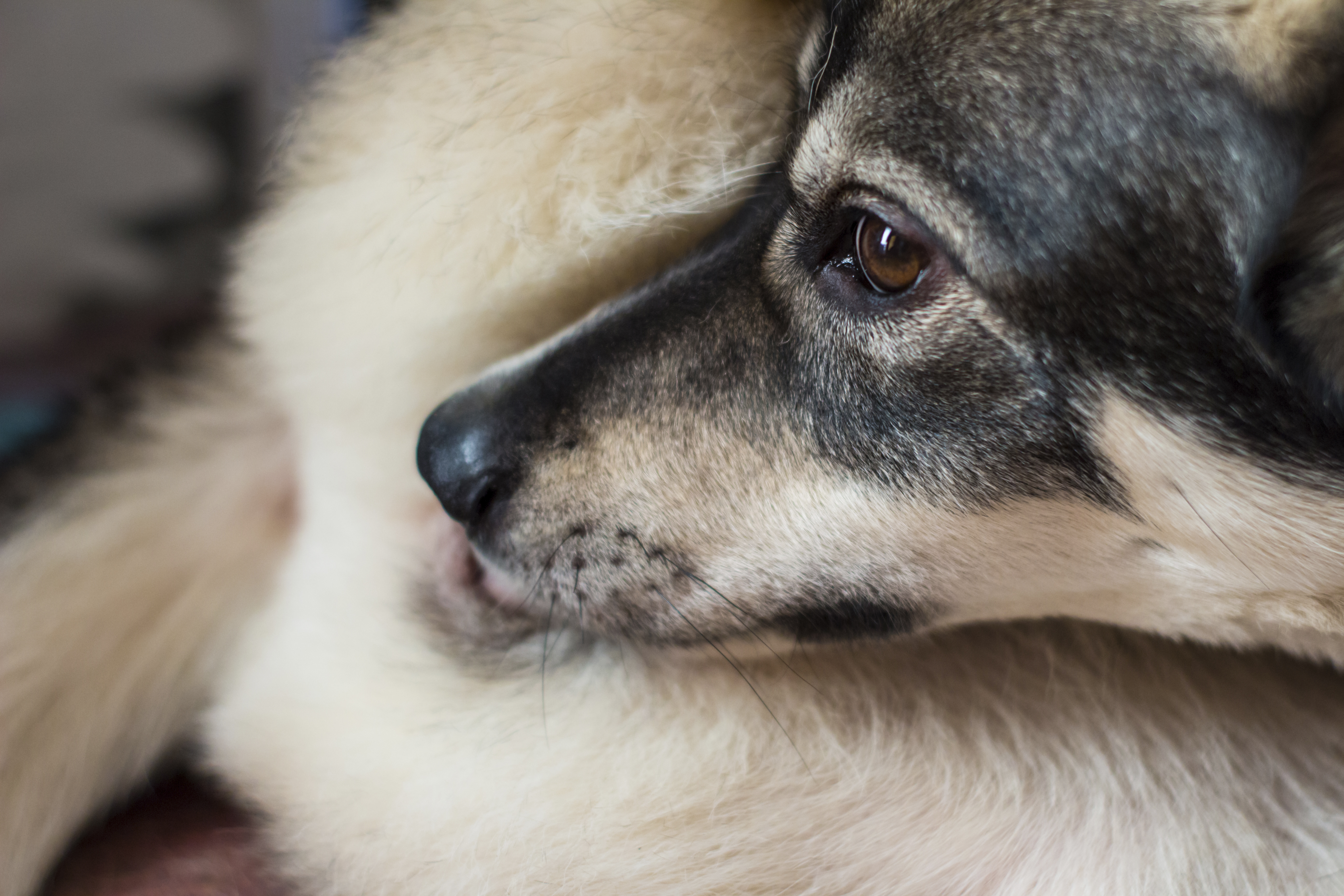
Cats Aren't the Only Pets that Can Get Hairballs!
When most pet parents think of hairballs, cats are usually the first things that come to mind. Cats are most likely to get hairballs, since they groom themselves with their barbed tongues. But what a lot of people don’t realize is that dogs can get hairballs, too.
If you aren’t aware of this dog-hairball phenomenon, you may be surprised and alarmed to see your pup hacking up a wad of hair. Fortunately, the occasional canine hairball is relatively normal. If your dog is getting hairballs frequently, though, there may be cause for concern. Here’s what you should know.
Why do dogs get hairballs?
Hairballs are caused by a buildup of ingested hair in your dog’s stomach. While small amounts of hair can pass through the digestive system, larger volumes of hair may accumulate into hairballs in the stomach and need to be vomited up.
Dogs of all kinds are capable of getting hairballs if they frequently lick at their fur, but those with medium and long hair are most likely to develop them. Dogs in general tend to put things in their mouths, so it’s normal if they swallow a wad of hair that they aren’t able to digest.
The problem with canine hairballs is when they become a frequent occurrence. Because dogs don’t groom themselves the same way cats do, there might be an underlying problem causing your dog to lick itself repeatedly and swallow lots of hair.
Usually, frequent hairballs in dogs are caused by itchy, irritated skin, leading your dog to over-groom to soothe itself and relieve the itchiness. This problem may be caused by atopic dermatitis from allergies, as well as parasites like fleas or ticks and skin dryness. Additionally, nutritional deficiencies or other, more serious health problems might be causing your dog to shed its fur much more frequently than it should.
Another potential cause for over-grooming and hairballs is boredom. If your dog is lacking stimulation, try to provide new activities for it to do so it doesn’t turn to licking as a form of entertainment.
Frequent hairballs are not only a nuisance to clean, but they may pose health threats to your pup. Constantly coughing up hairballs may irritate your dog’s throat, causing discomfort or pain. Sometimes, hairballs can become too large to vomit up or pass through the intestines, in which case they get stuck and cause a potentially lethal blockage. The more hairballs your dog has, the higher these risks will be.

Helping your dog with its hairballs
If you have noticed your dog struggling to cough up hairballs in the past, or its hairballs have increased in frequency, there are a few ways you can help ease its discomfort.
- Brush more frequently: Your dog can’t get hairballs as frequently if it doesn’t have a ton of hair left to ingest! If your dog sheds a lot, make an effort to reduce the loose hair on its coat by brushing its fur at least once a day and getting it regular haircuts. Not only will this remove loose hair, but it can distribute oils to keep hair healthy and promote healthy skin, as well!
- Address underlying problems leading to itchy skin: If your dog is suffering from itchy, irritated skin, it may be tempted to lick more often and ingest more hair. First, check your dog for parasites like fleas and treat the problem if skin parasites are found. If the skin is bumpy and inflamed and your dog itches a lot, have it tested for allergies and help it avoid its allergens as much as possible. You might also see results by providing it with supplements to minimize atopic dermatitis symptoms. If your dog’s skin is dry, avoid bathing it too much and provide omega-3 fatty acids to promote a healthy, shiny coat. Once the itchy skin is addressed, your dog will be less likely to lick its fur and ingest lots of hair.
- Ease hairball-related discomfort: Hacking up a hairball can be hard work for a dog, especially when it’s not used to it! If your dog is heaving and coughing a lot, provide natural supplements to soothe its throat. Hairball remedies for cats may also be useful, but make sure to check with your veterinarian before administering products intended for felines to avoid canine illness. Additionally, provide your dog with lots of water so it stays hydrated and passes hair more easily.
- Keep an eye out for blockage symptoms: Although they don’t happen often, it’s important to know what an intestinal blockage looks like in dogs so you can seek veterinary care as soon as possible. If a hairball is causing a blockage, your dog might act lethargic, lose its appetite, vomit or have diarrhea. It might also try to repeatedly cough up the hairball with no success.
In general, remember that the occasional hairball in dogs is normal, but frequent hairballs are not, so an underlying health problem might need to be identified and addressed.


